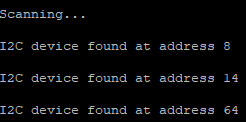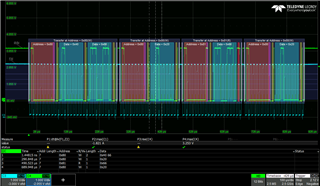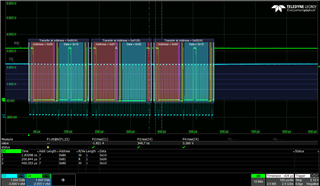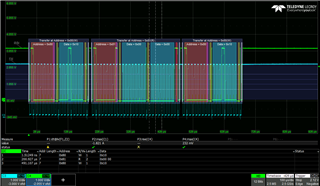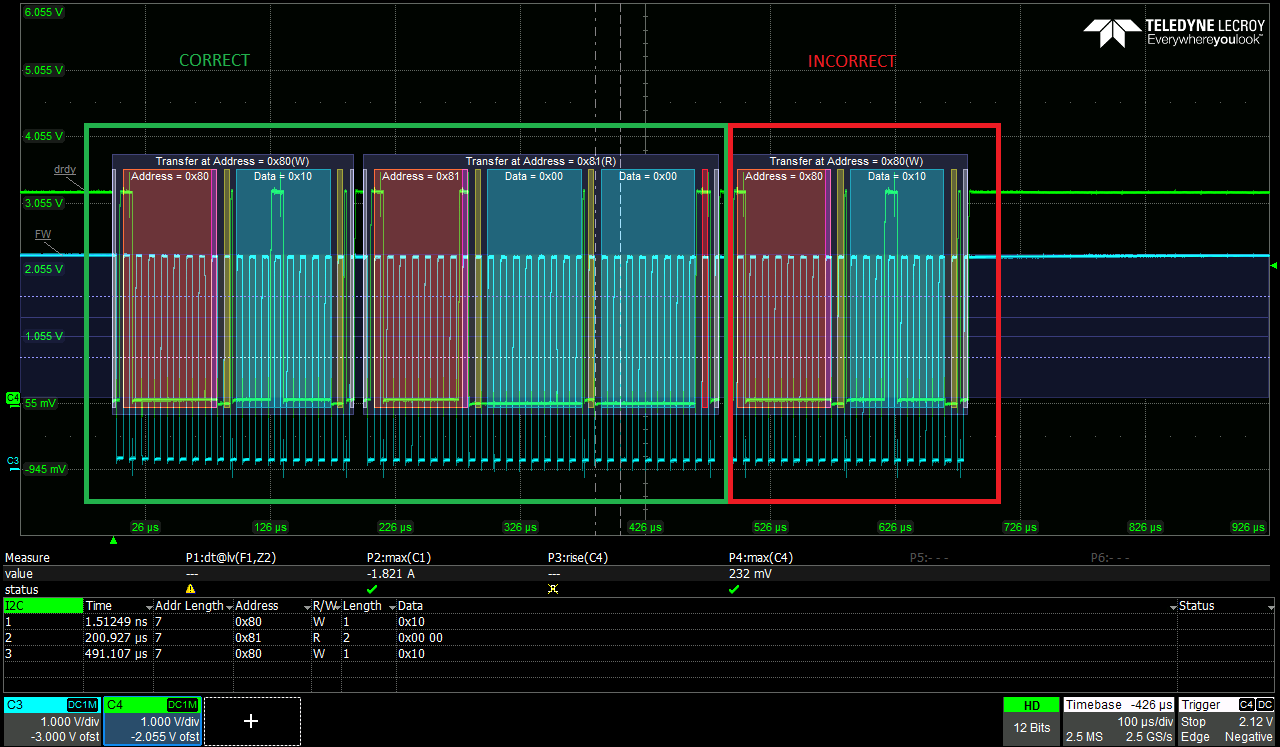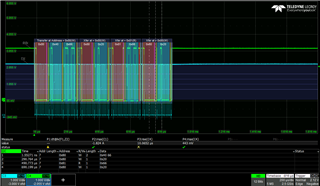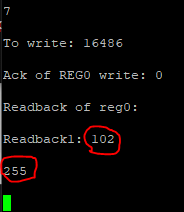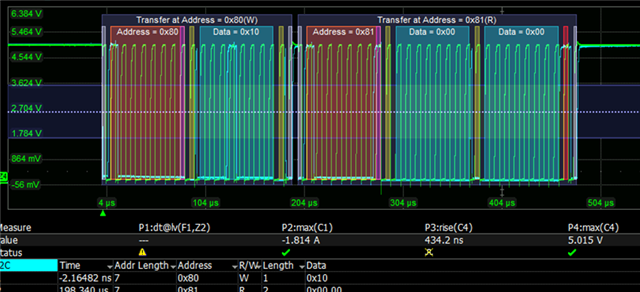Hello,
I'm breadboarding this ADC for a future design and having trouble getting readbacks from the device (I've made up two). Here is a sketch of the circuit:
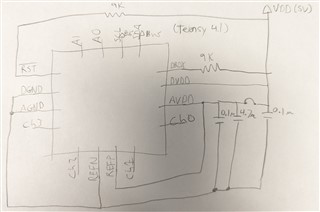
And a pic of DRDY as I try to read the back the ADC:
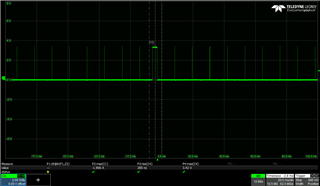
I'm sending the following commands (code, then terminal):
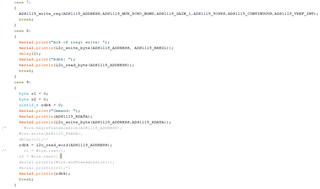
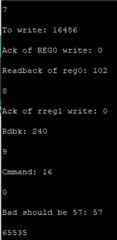
So power seems good, I2C is working, I can modify and read back registers, and DRDY shows both continuous readback as well as a longer interval when I'm reading back. But the readback (I set the variable to a likely garbage number just to make sure the data is read back at all) is always FFFF.
I'm struggling with debug here - what are the best next steps to verify that things are working, and where I may have screwed up the implementation of likely the hardware?
Thanks in advance,
-Hugh Eisenman


